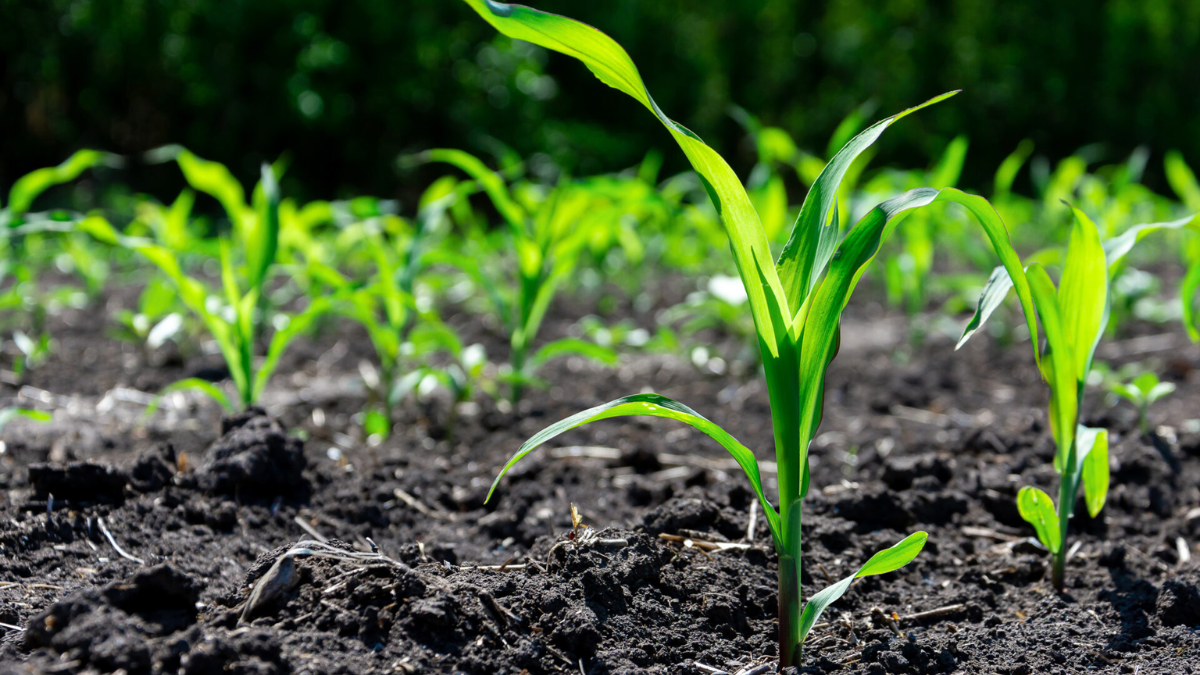According to the USDA’s 2025 Prospective Plantings report, U.S. farmers are projected to plant approximately 95.3 million acres of corn, marking a 5% increase from the previous year. This increase underscores a strong demand for corn, driven by factors such as ethanol production, livestock feed, and export markets.
Corn remains a staple crop in the U.S. agricultural economy, with the USDA reporting that planted acreage will be up or unchanged in 40 of the 48 estimating states. This expansion reflects the confidence of farmers in the long-term demand for corn and the economic benefits associated with its cultivation.
Iowa Leads the Nation in Corn Acres
Among all states, Iowa is set to plant the most corn acres in 2025. Farmers in the state are expected to allocate approximately 13.5 million acres to corn production, making up over 13% of the total U.S. corn acreage.
Iowa has long been a leader in corn production, thanks to its fertile soil, favorable climate, and extensive infrastructure supporting grain storage, processing, and transportation.
Following Iowa, Illinois ranks second, with an estimated 11.1 million acres of corn to be planted. Nebraska follows closely in third place, with a projected 10.6 million acres.
These three states alone will account for a substantial portion of the total corn acreage in the U.S., further reinforcing their critical role in the nation’s agricultural output. Other states, such as Minnesota, Indiana, and South Dakota, are also expected to contribute significantly to the total corn acreage expansion.
Factors Driving the Increase in Corn Acreage
Several factors are contributing to the rise in corn acreage in 2025:
1. Higher Demand for Ethanol
The biofuel industry continues to play a significant role in the agricultural economy, with ethanol production serving as a major driver of corn demand. Ethanol remains a critical component of the renewable fuel sector, and policies promoting biofuels have encouraged greater corn planting.
As global efforts to reduce carbon emissions intensify, ethanol usage is expected to grow, boosting demand for corn.
2. Strong Global Export Market
The international market for U.S. corn remains robust, with countries such as China and Mexico being major importers. Demand for U.S. corn exports has been steadily increasing, driven by global food security concerns, livestock feed needs, and economic growth in developing nations.
With global supply chain disruptions stabilizing, U.S. corn exports are projected to remain strong in 2025, further motivating farmers to increase acreage.
3. Livestock Feed Needs
Corn is a crucial component of livestock feed, particularly for poultry, cattle, and swine industries. As demand for meat and dairy products rises, so does the need for high-quality feed. The livestock industry remains a key driver of corn consumption, incentivizing farmers to dedicate more land to corn cultivation to meet the growing needs of animal agriculture.
4. Improved Crop Prices
Favorable corn prices have also influenced planting decisions. Over the past year, corn prices have remained competitive, providing farmers with an economic incentive to expand acreage. With market conditions showing stability and demand remaining high, farmers are confident in their ability to secure profitable returns on their investment in corn production.
Challenges Facing Corn Farmers in 2025
While the increase in corn acreage is a positive indicator for the agricultural sector, farmers will face several challenges in 2025 that could impact overall yields and profitability.
1. Weather Uncertainty
Unpredictable weather patterns remain a significant challenge for farmers. Droughts, floods, and severe storms can affect planting schedules and crop yields. Climate variability has become a growing concern, making it essential for farmers to adopt resilient agricultural practices and invest in drought-resistant seed varieties.
2. Rising Input Costs
The cost of farming inputs, including fertilizer, fuel, and machinery, continues to rise. Higher input costs can reduce profit margins for farmers, making it more challenging to achieve economic sustainability. The increased demand for fertilizers and pesticides, coupled with supply chain issues, has driven up costs, forcing farmers to strategize and seek cost-effective solutions.
3. Trade Policies and Market Volatility
Global trade policies and potential tariff changes could influence the U.S. corn export market. Trade negotiations with key importers such as China and Mexico will be crucial in determining the stability of the export market. Any shifts in trade agreements or tariff structures could affect demand and pricing, impacting farmers’ bottom lines.
4. Soil Health and Sustainability Concerns
Continuous corn planting can deplete soil nutrients and contribute to long-term soil degradation. Farmers are increasingly focusing on sustainable agricultural practices, such as crop rotation and cover cropping, to maintain soil health. Implementing conservation practices and precision agriculture can help mitigate soil depletion and improve long-term productivity.
What This Means for the Agriculture Industry
With Iowa, Illinois, and Nebraska leading the way, the U.S. corn industry is set for another strong year. The increase in corn acreage highlights confidence in market demand, but external factors such as weather conditions, trade policies, and rising input costs will play a crucial role in determining final yields and profitability.
The agricultural sector must remain adaptable and forward-thinking, embracing technological advancements and sustainable practices to ensure continued success.
Industry stakeholders, including farmers, agribusinesses, and policymakers, must stay informed about market trends and evolving agricultural policies to make strategic decisions. The long-term outlook for U.S. corn production remains positive, but success in 2025 will depend on how well the industry navigates economic and environmental challenges.
For more detailed coverage on corn acreage trends in 2025, visit the USDA Report.
Disclaimer – Our team has carefully fact-checked this article to make sure it’s accurate and free from any misinformation. We’re dedicated to keeping our content honest and reliable for our readers.
